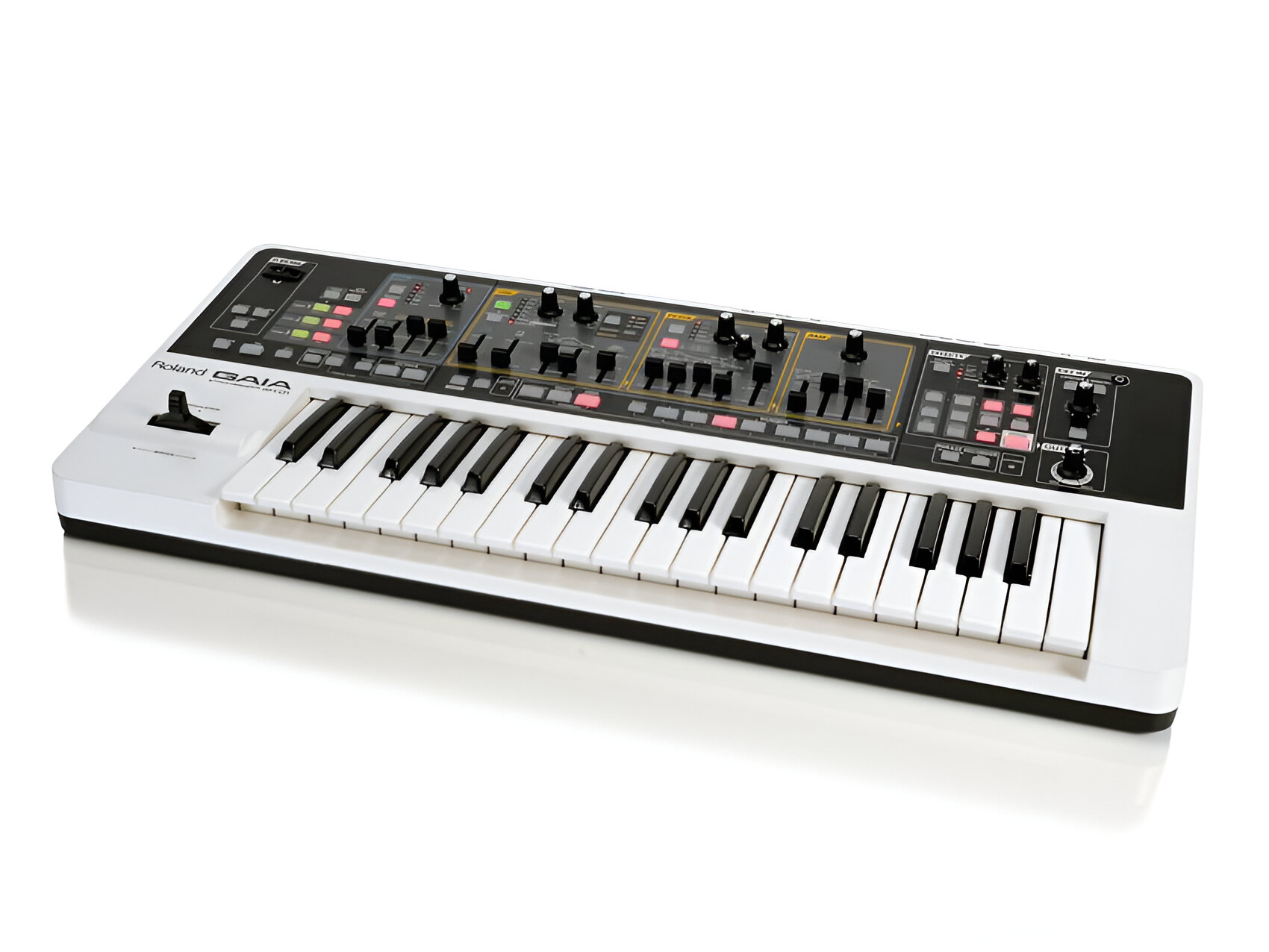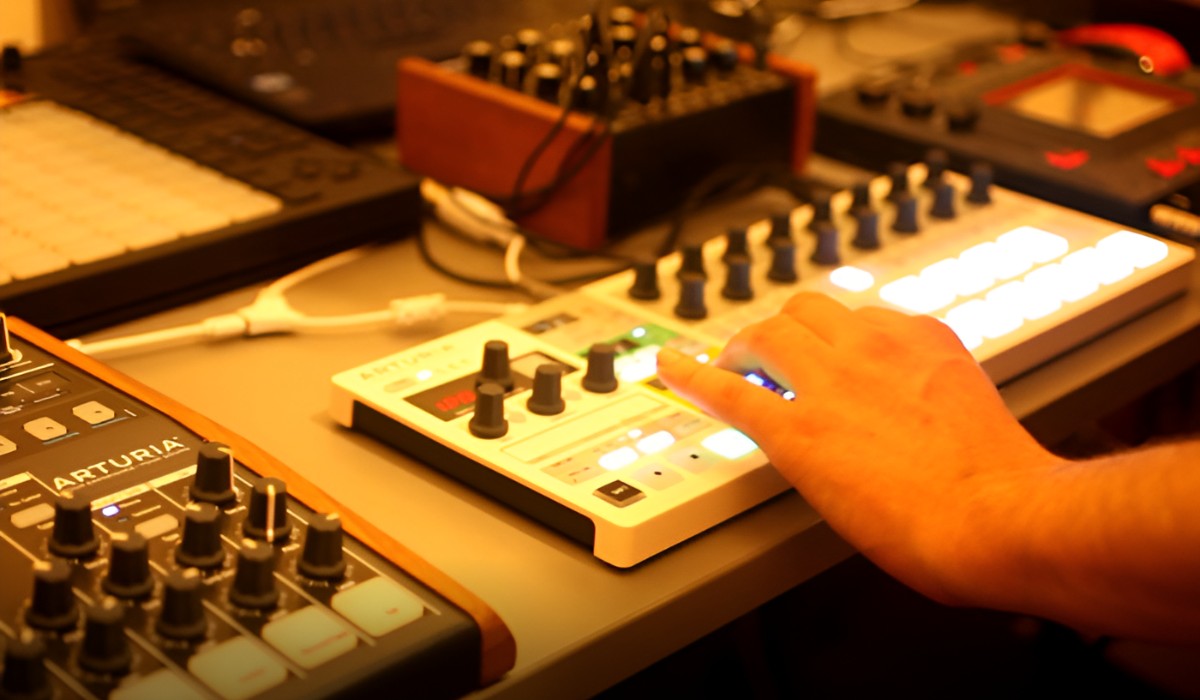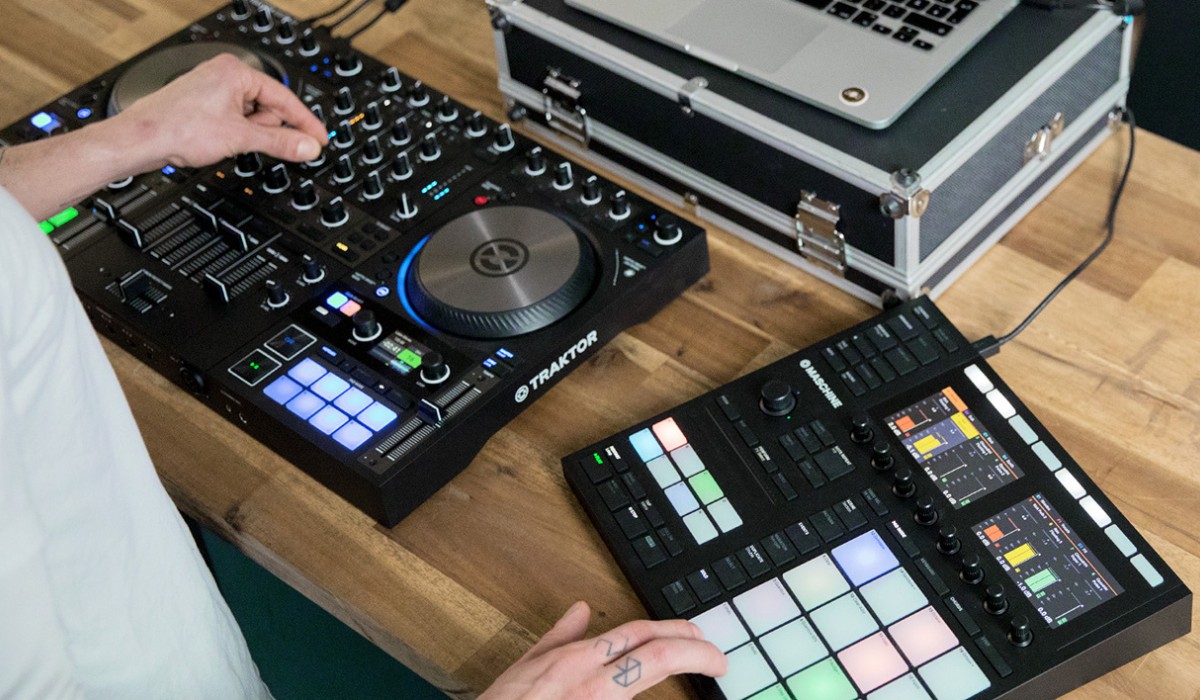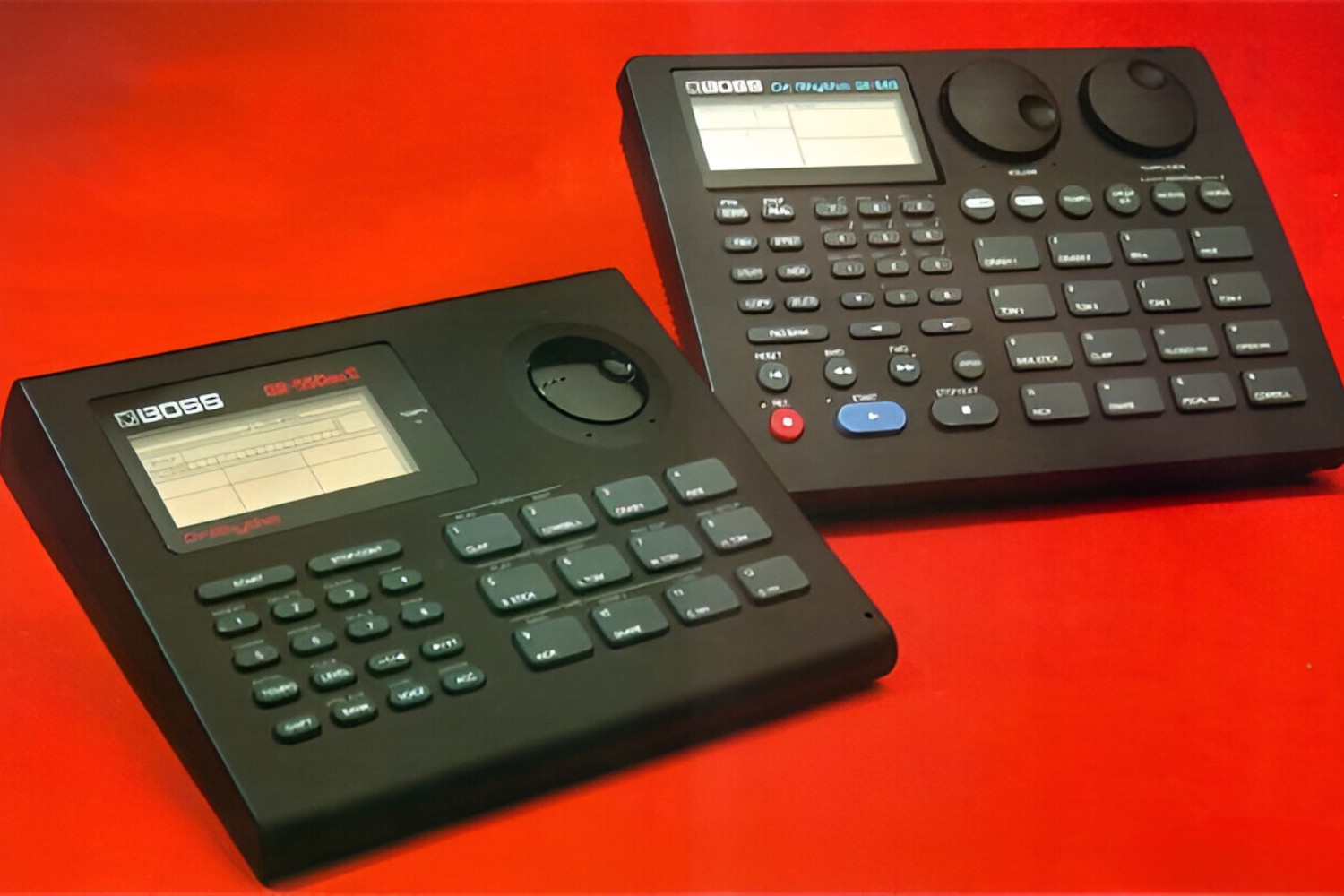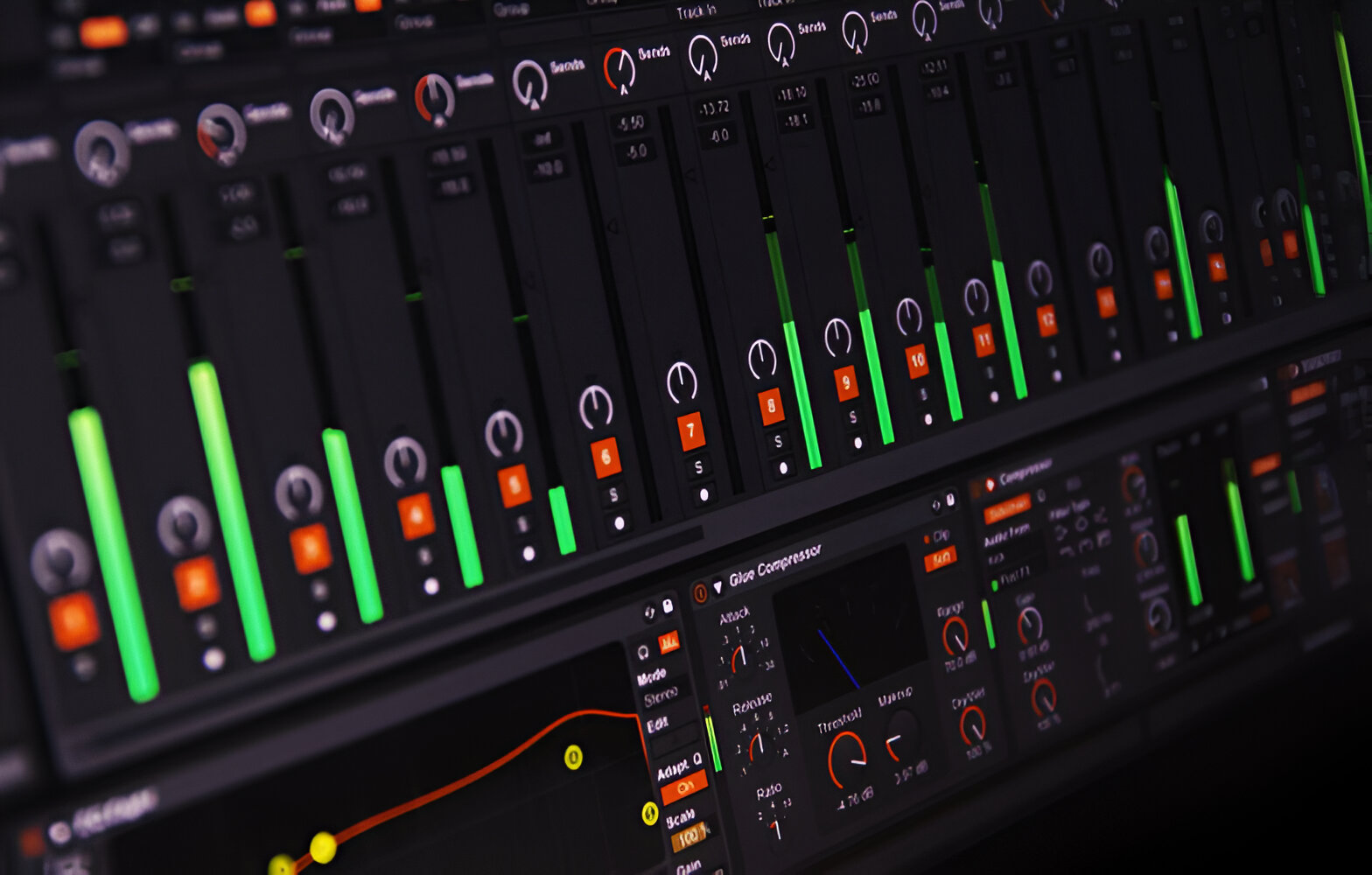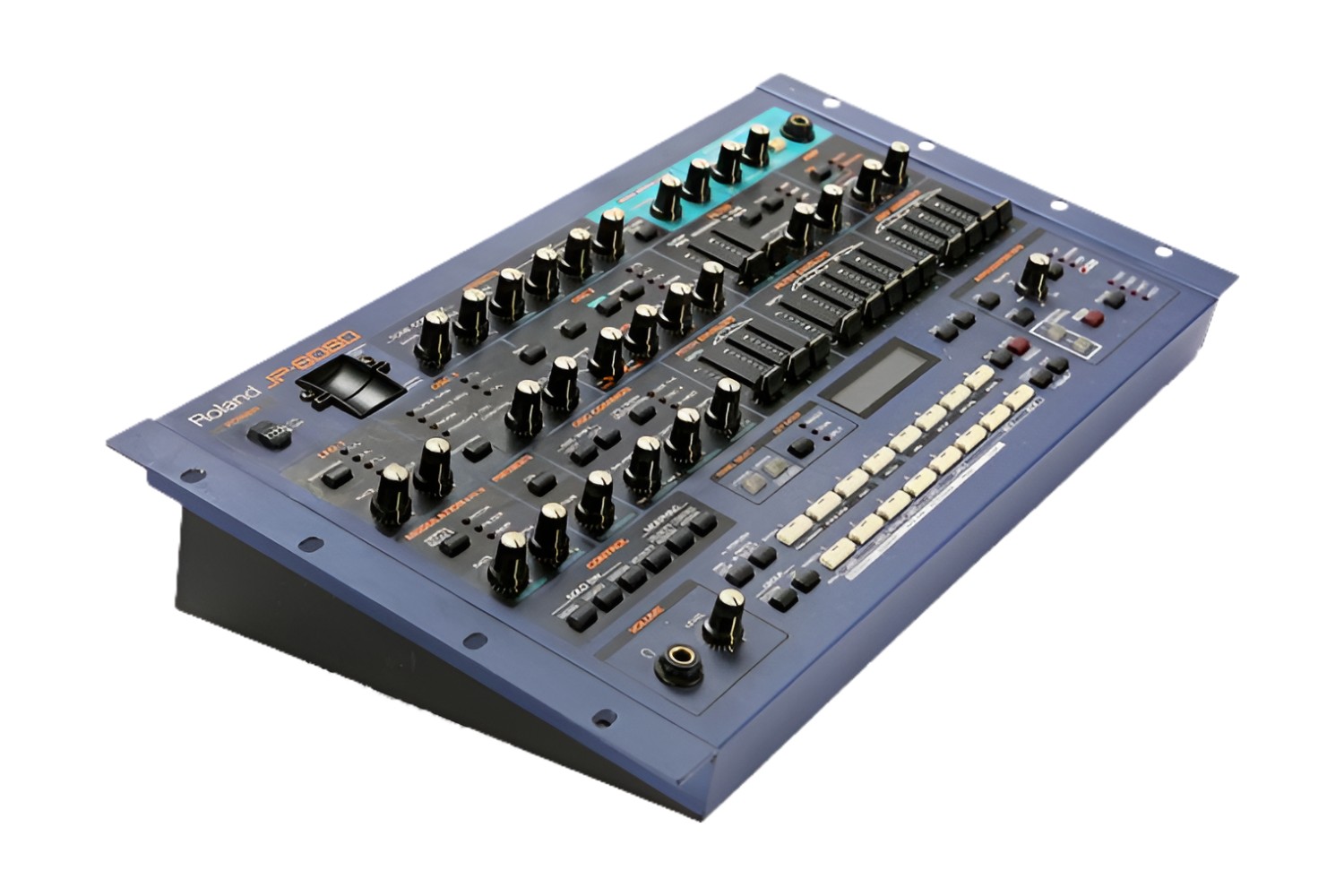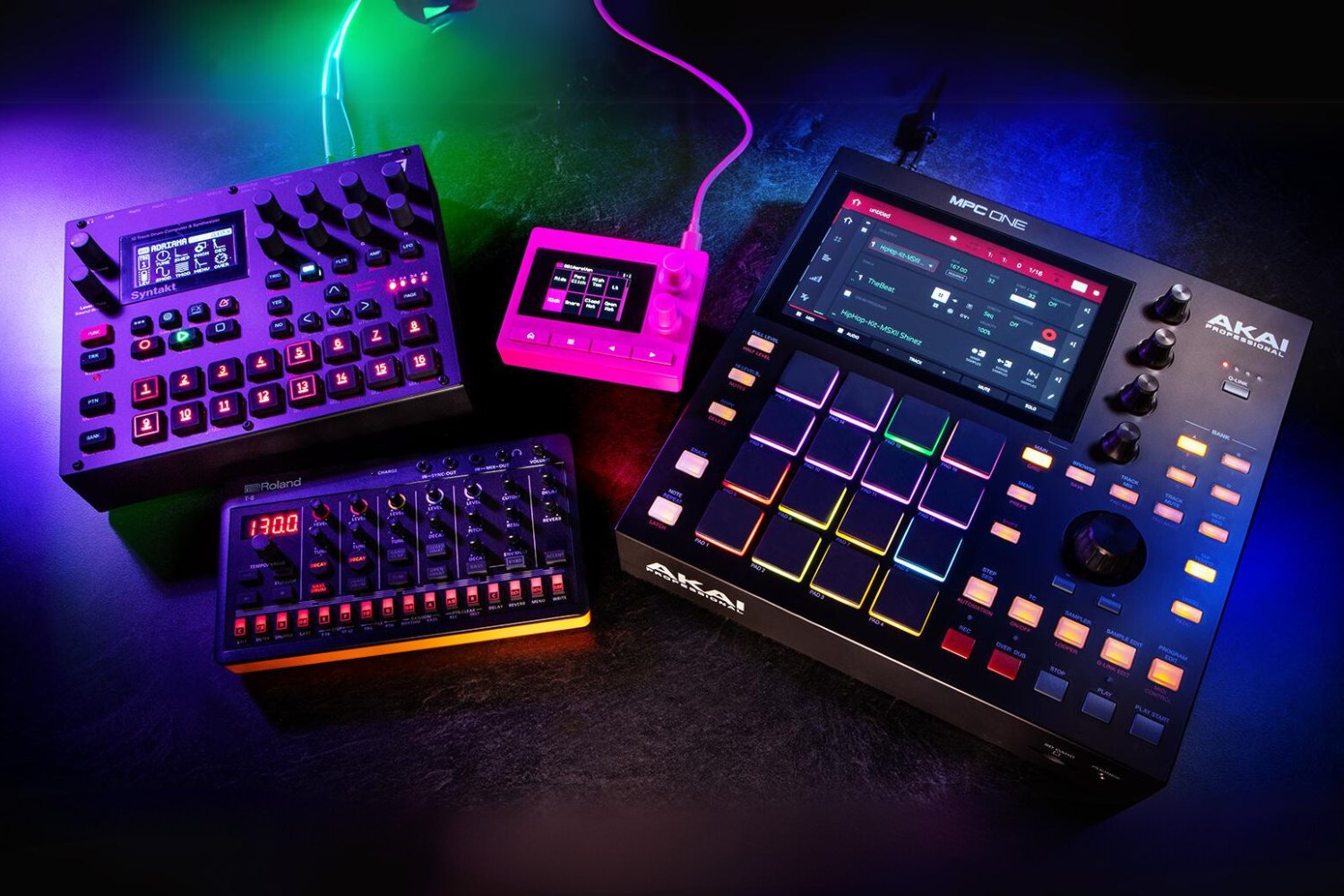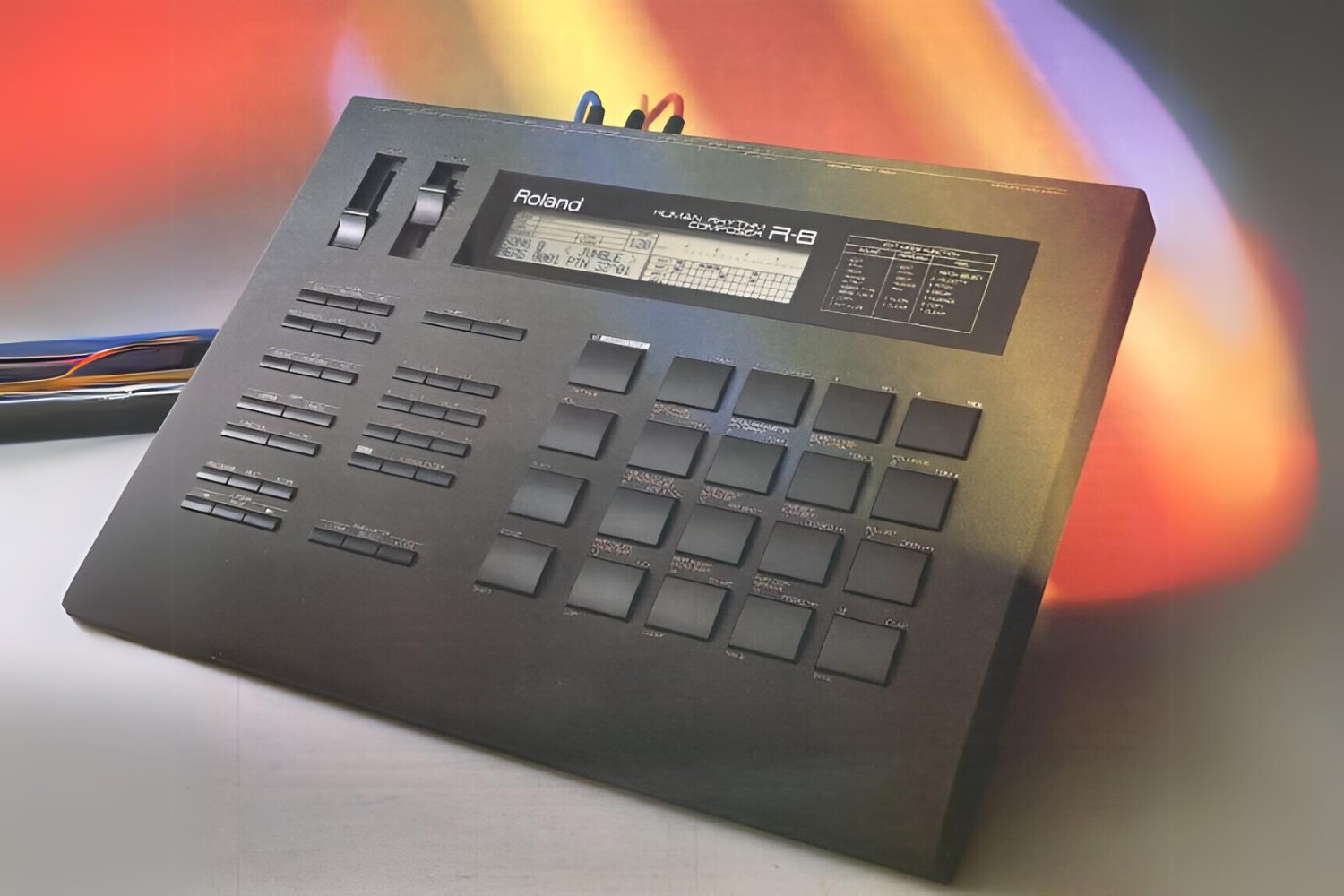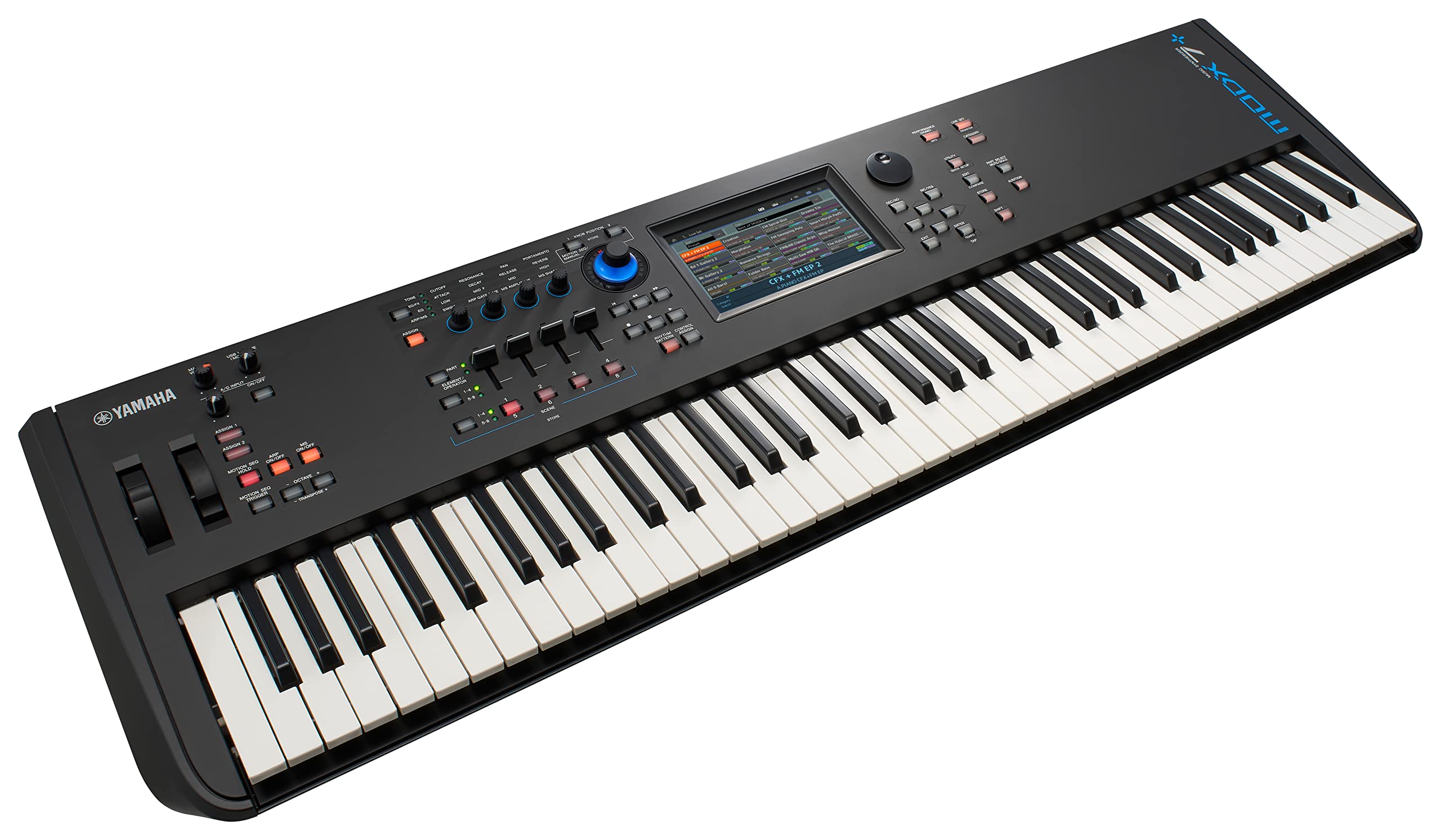Introduction
Welcome to the fascinating world of music production and synthesis! If you're a proud owner of the Roland Gaia SH-01 synthesizer and a drum machine, you're in for an exciting journey into the realm of synchronized music creation. In this guide, we'll delve into the intricacies of syncing your drum machine with the Roland Gaia SH-01 using MIDI, allowing you to harness the full potential of these powerful musical tools.
The Roland Gaia SH-01 is a versatile and expressive synthesizer renowned for its rich, warm sound and intuitive interface. Whether you're a seasoned musician or a budding enthusiast, this synthesizer offers a plethora of sonic possibilities, making it a popular choice for live performances and studio recordings. On the other hand, a drum machine serves as the rhythmic heartbeat of your compositions, providing an array of percussive sounds and patterns to complement the melodies generated by the synthesizer.
Understanding how to synchronize these two instruments through MIDI (Musical Instrument Digital Interface) opens up a world of creative opportunities. MIDI enables seamless communication between musical devices, allowing them to share tempo, timing, and other musical information. By syncing your drum machine with the Roland Gaia SH-01, you can achieve perfect rhythmic cohesion, ensuring that your beats and melodies harmonize flawlessly.
In the upcoming sections, we will walk you through the process of setting up your Roland Gaia SH-01 and connecting it to your drum machine. We'll then explore the intricacies of syncing the drum machine with the synthesizer using MIDI, providing you with a step-by-step guide to streamline the synchronization process. Additionally, we'll cover essential tips for testing and troubleshooting to ensure that everything runs smoothly.
By the end of this guide, you'll be well-versed in the art of syncing your drum machine with the Roland Gaia SH-01, empowering you to unleash your creativity and craft captivating musical compositions with precision and finesse. So, let's embark on this musical odyssey and unlock the full potential of your musical setup!
Understanding MIDI
Before delving into the intricacies of syncing your drum machine with the Roland Gaia SH-01, it’s essential to grasp the fundamental concept of MIDI. MIDI, which stands for Musical Instrument Digital Interface, serves as the universal language that allows electronic musical instruments, computers, and other devices to communicate and synchronize with each other.
At its core, MIDI is not an audio signal, but rather a set of instructions that transmit data related to musical performance. These instructions encompass a wide range of parameters, including note-on and note-off messages, velocity, pitch, modulation, and control changes. By conveying this musical data, MIDI enables seamless interaction between different musical devices, facilitating the creation and manipulation of sounds in real time.
One of the key advantages of MIDI is its versatility. It empowers musicians to control multiple instruments simultaneously, triggering notes, adjusting parameters, and synchronizing tempo across various devices. This flexibility is particularly valuable in the realm of electronic music production, where intricate layering of sounds and precise synchronization are paramount.
Furthermore, MIDI allows for non-destructive editing and manipulation of musical performances. Since MIDI data represents musical instructions rather than audio waveforms, it can be easily edited, quantized, and rearranged without compromising the original audio quality. This capability is invaluable in refining musical compositions and ensuring that every note and rhythm aligns harmoniously.
When it comes to syncing instruments such as the Roland Gaia SH-01 synthesizer and a drum machine, MIDI serves as the bridge that unifies their rhythmic elements. By transmitting timing and tempo information between the two devices, MIDI synchronization ensures that the drum machine’s patterns align precisely with the synthesizer’s sequences, resulting in a cohesive and synchronized musical output.
As we proceed with this guide, you’ll gain a deeper understanding of how MIDI facilitates the seamless integration of musical instruments, paving the way for a harmonious collaboration between the Roland Gaia SH-01 and your drum machine. With this foundational knowledge of MIDI, you’ll be well-equipped to embark on the journey of syncing these musical powerhouses and unleashing their combined potential.
Setting Up the Roland Gaia SH-01
Before embarking on the process of syncing your Roland Gaia SH-01 with a drum machine via MIDI, it’s essential to ensure that the synthesizer is properly set up and ready to communicate with external devices. The Roland Gaia SH-01 offers a straightforward and intuitive interface for establishing MIDI connections, allowing you to seamlessly integrate it into your musical setup.
To begin, power on your Roland Gaia SH-01 and navigate to the MIDI settings. Typically, you can access the MIDI configuration by pressing the “MIDI” button or accessing the MIDI menu from the synthesizer’s control panel. Within the MIDI settings, you’ll have the option to configure various parameters related to MIDI communication, including channel assignments, clock settings, and synchronization options.
Next, assign a MIDI channel to the Roland Gaia SH-01. MIDI channels serve as communication pathways that allow different devices to transmit and receive MIDI data independently. Select a MIDI channel that aligns with your workflow and complements the configuration of your drum machine. This ensures that the synthesizer and drum machine can communicate effectively without conflicting MIDI data.
Once the MIDI channel is assigned, verify the MIDI clock settings on the Roland Gaia SH-01. The MIDI clock governs the tempo and timing information that the synthesizer sends and receives via MIDI. Ensure that the MIDI clock settings are configured to either send or receive MIDI clock signals as per your intended usage. This step is crucial for synchronizing the Roland Gaia SH-01 with external devices, such as a drum machine, to achieve rhythmic cohesion.
Additionally, if you plan to utilize MIDI control changes (CC) or other MIDI parameters to modulate the synthesizer’s parameters from your drum machine or external controller, you can configure the MIDI control assignments within the Roland Gaia SH-01’s settings. This allows for expressive and dynamic control over the synthesizer’s parameters, enhancing the interactive capabilities of your musical setup.
By ensuring that the Roland Gaia SH-01 is appropriately configured for MIDI communication and synchronization, you pave the way for seamless integration with your drum machine. This meticulous setup process sets the stage for a harmonious collaboration between the synthesizer and the rhythmic elements provided by the drum machine, enabling you to craft compelling musical compositions with precision and fluidity.
Connecting the Drum Machine
As you venture into the realm of syncing your drum machine with the Roland Gaia SH-01, establishing the physical connections between the two devices is a pivotal step in enabling seamless MIDI communication and synchronization. The process of connecting the drum machine to the synthesizer involves interfacing their MIDI ports to facilitate the exchange of musical data and tempo information.
Begin by identifying the MIDI ports on both the drum machine and the Roland Gaia SH-01. Most modern drum machines feature MIDI input and output ports, which allow them to send and receive MIDI data. Similarly, the Roland Gaia SH-01 is equipped with MIDI ports to facilitate communication with external devices. Locate these ports to prepare for the connection process.
Using a standard MIDI cable, connect the MIDI output port of the drum machine to the MIDI input port of the Roland Gaia SH-01. Ensure that the cable is securely plugged into each device to establish a reliable connection. The MIDI output of the drum machine serves as the source of MIDI data, which will be transmitted to the Roland Gaia SH-01’s MIDI input, enabling the synthesizer to receive the rhythmic and timing information from the drum machine.
Once the MIDI cable is connected, verify that the drum machine’s MIDI settings align with the MIDI channel and clock configuration of the Roland Gaia SH-01. This harmonization ensures that the drum machine transmits MIDI data on a compatible channel and synchronizes its tempo with the synthesizer, fostering a cohesive musical relationship between the two devices.
In addition to MIDI connectivity, some drum machines offer the option of sending audio output to external audio interfaces or mixers. If you intend to integrate the audio output of the drum machine with the Roland Gaia SH-01’s audio signal, consider connecting the drum machine’s audio output to an available audio input on your mixing console or audio interface. This enables you to blend the percussive elements from the drum machine with the rich synthesis capabilities of the Roland Gaia SH-01, creating a unified sonic tapestry.
By establishing the physical connections between the drum machine and the Roland Gaia SH-01, you lay the groundwork for seamless MIDI communication and synchronization. This interconnected setup paves the way for rhythmic cohesion and collaborative musical expression, allowing the two devices to function in harmony and elevate your musical compositions to new heights.
Syncing the Drum Machine with MIDI
Syncing your drum machine with the Roland Gaia SH-01 through MIDI involves establishing a cohesive link between the rhythmic patterns generated by the drum machine and the melodic sequences produced by the synthesizer. By leveraging MIDI synchronization, you can ensure that both devices operate in perfect harmony, aligning their tempo and timing to create a unified musical performance.
Initiate the synchronization process by configuring the MIDI settings on the drum machine. Access the MIDI menu or settings on the drum machine’s interface and verify the MIDI channel assignments and clock settings. Align the MIDI channel of the drum machine with the MIDI channel assigned to the Roland Gaia SH-01, enabling them to communicate on the same channel and exchange MIDI data seamlessly.
Once the MIDI channel alignment is established, activate the MIDI clock output on the drum machine. The MIDI clock serves as the master tempo source, dictating the rhythmic pace and timing information that will be transmitted to the Roland Gaia SH-01. By enabling the MIDI clock output, the drum machine assumes the role of the tempo conductor, ensuring that the synthesizer synchronizes its musical sequences and arpeggios with the drum machine’s rhythmic patterns.
On the Roland Gaia SH-01, access the MIDI settings to configure the reception of MIDI clock signals. Enable the MIDI clock input to allow the synthesizer to receive the tempo information transmitted by the drum machine. This step ensures that the Roland Gaia SH-01 adapts its tempo and timing to align with the rhythmic cues provided by the drum machine, fostering a seamless fusion of melodic and percussive elements.
As the MIDI clock signals flow from the drum machine to the Roland Gaia SH-01, you’ll witness the rhythmic synchronization come to life. The synthesizer’s sequences and arpeggios will seamlessly lock into the tempo established by the drum machine, creating a unified musical canvas where the rhythmic and melodic elements coalesce with precision and fluidity.
By successfully syncing your drum machine with the Roland Gaia SH-01 through MIDI, you empower these musical instruments to operate as a cohesive unit, breathing life into your compositions with synchronized rhythms and captivating melodies. This synchronization process lays the foundation for collaborative musical expression, allowing you to explore the boundless possibilities of rhythmic and melodic interplay within your musical productions.
Testing and Troubleshooting
Once you’ve synchronized your drum machine with the Roland Gaia SH-01 using MIDI, it’s essential to conduct thorough testing to ensure that the two devices operate seamlessly in harmony. Testing allows you to validate the synchronization, identify potential issues, and troubleshoot any challenges that may arise, enabling you to fine-tune the collaborative interplay between the synthesizer and the drum machine.
Begin by playing a rhythmic pattern on the drum machine while triggering melodic sequences or arpeggios on the Roland Gaia SH-01. Observe the interaction between the two devices, paying close attention to the alignment of rhythmic accents and melodic phrases. Verify that the drum machine’s patterns synchronize flawlessly with the synthesizer’s sequences, creating a cohesive musical blend devoid of timing discrepancies.
Experiment with varying tempos on the drum machine to assess the responsiveness of the Roland Gaia SH-01 to tempo changes. Adjust the tempo settings on the drum machine and observe how the synthesizer adapts to the tempo modifications in real time. This testing process allows you to ascertain the agility and accuracy of the MIDI synchronization, ensuring that the rhythmic and melodic elements remain harmoniously aligned across different tempo ranges.
If you encounter any discrepancies or irregularities during the testing phase, delve into troubleshooting to pinpoint and address potential issues. Check the MIDI cables connecting the drum machine and the Roland Gaia SH-01 to ensure that they are securely plugged in and free from damage. A faulty MIDI cable can disrupt the MIDI communication, leading to timing inconsistencies and synchronization errors.
Inspect the MIDI settings on both the drum machine and the Roland Gaia SH-01 to verify that the MIDI channels and clock configurations align harmoniously. Misconfigured MIDI settings can impede the seamless exchange of MIDI data, hindering the synchronization between the two devices. Adjust the MIDI settings as needed to establish a cohesive MIDI communication protocol.
If troubleshooting efforts do not resolve the synchronization issues, consider consulting the user manuals of the drum machine and the Roland Gaia SH-01 for specific troubleshooting guidance. Manufacturers often provide comprehensive troubleshooting resources to address common MIDI synchronization challenges, offering insights into resolving technical issues and optimizing MIDI communication.
By conducting rigorous testing and troubleshooting, you can refine the synchronization between your drum machine and the Roland Gaia SH-01, ensuring that they function as a unified musical ensemble. This meticulous approach to testing and troubleshooting fosters a seamless musical collaboration, allowing you to harness the full potential of MIDI synchronization in crafting captivating and precisely orchestrated musical compositions.
Conclusion
Congratulations on embarking on the exhilarating journey of syncing your drum machine with the Roland Gaia SH-01 through MIDI! By navigating the intricacies of MIDI communication and synchronization, you’ve unlocked a realm of creative possibilities, allowing the rhythmic and melodic elements of your musical arsenal to harmonize seamlessly.
Throughout this guide, you’ve gained a comprehensive understanding of MIDI and its pivotal role in facilitating the synchronization of musical instruments. From setting up the Roland Gaia SH-01’s MIDI configuration to connecting the drum machine and fine-tuning the MIDI synchronization, you’ve embarked on a meticulous process that culminates in a harmonious musical collaboration.
As you venture into the realm of MIDI synchronization, remember the transformative power it holds. MIDI serves as the conduit through which your musical devices communicate, enabling them to share tempo, timing, and musical data with precision. With this newfound knowledge, you have the tools to orchestrate seamless rhythmic and melodic interplay, elevating your musical compositions to new heights.
Furthermore, the testing and troubleshooting phase has equipped you with the skills to validate the synchronization, identify potential issues, and address them effectively. Through rigorous testing and meticulous troubleshooting, you’ve honed your ability to ensure that the drum machine and the Roland Gaia SH-01 operate in perfect harmony, fostering a cohesive musical landscape devoid of timing discrepancies.
As you continue to explore the boundless possibilities of MIDI synchronization, remember that experimentation and creativity are your allies. Embrace the dynamic interplay between rhythmic patterns and melodic sequences, leveraging MIDI synchronization to craft captivating musical arrangements that resonate with precision and fluidity.
Ultimately, the synchronization of your drum machine with the Roland Gaia SH-01 through MIDI marks the beginning of an inspiring musical odyssey. Armed with a deep understanding of MIDI, a meticulously configured setup, and the ability to troubleshoot and refine the synchronization, you are poised to unleash the full potential of your musical setup and embark on a captivating journey of creative expression.
So, as you immerse yourself in the art of MIDI synchronization, let your musical vision flourish, and may the harmonious collaboration between your drum machine and the Roland Gaia SH-01 ignite a symphony of creativity and innovation in your musical endeavors.







